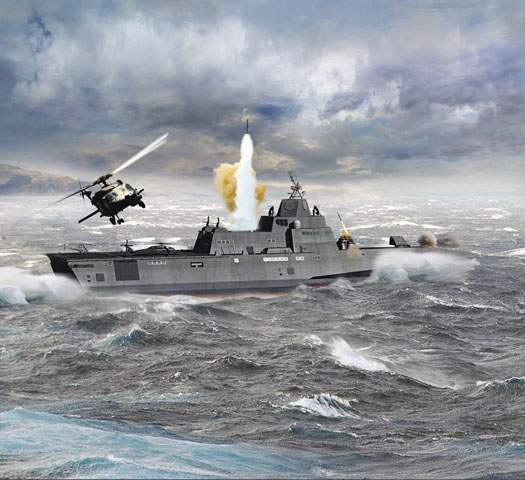
The Navy is calling on industry to arm the task force working the follow-on design to the current version of the Littoral Combat Ship with concepts through two requests for information (RFI), issued late Wednesday.
The effort is part of the abrupt shift in the Littoral Combat Ship program announced by Secretary of Defense Chuck Hagel in February.
One will ask industry for, “mature ship design concepts whole ship design information, including cost, on mature ship designs and mature concept designs that have the capability and lethality generally consistent with a small surface combatant is desired,” read the ship RFI.
The second will focus on specific systems and technologies — like “weapon systems, sensors, command and control systems, communication systems, network and data links, mission module concepts and designs, off- board vehicles, and innovative power and cooling systems,” according to the systems RFI.
“We want to collect their ideas and thoughts because they have certainly thought about the problem,” John Burrow, executive director of the Marine Corps Systems Command and current head of the Small Surface Combatant Task Force, told reporters in a Pentagon meeting on Wednesday.
“The RFI will ask for pretty specific information that will give us insight to the ship integration requirement, the performance, what are the primary, second and third order costs associated with [concepts],” he said.
“It’s a fairly detailed list of information that we’re looking for.”
Industry responses are due to the Navy by May 22, Burrow said.
The taskforce is assembling the information ahead of a Secretary of Defense mandated July 31 report to Navy leadership on so-called “capability concepts” which will break down ship and system options into different combinations of capability.
The concepts will include a menu of options centered around four mission areas: anti-air warfare, surface warfare, anti-submarine warfare and mine counter measure (MCM) operations.
“There is no single capability concept, there are multiple capability concepts that give really a range of mission and capability options based on the threat environment and the gaps that we’ll look at,” Burrow said.
“That will drive the design work and the design work will drive the cost.”
The Navy will then weigh the capability concepts and determine how the service will conduct further steps to acquire a new ship to replace the Flight 0 LCS designs.
Burrow will also offer limited cost reporting to Navy leadership.
“What I am going to give is a good median value for the cost that we look at for all of these configuration alternatives and we’ll be able to bound the cost risk associated with those based on a review of our assumptions,” he said.
The new ship will be built with a series of yet-to-be-defined affordability targets.
In tandem, the task force will solicit opinions from the fleet in events in May in Hawaii and Norfolk, Va., Burrow said.
A large part of the task force’s work is to determine how the ship will be integrated into existing Navy concepts of operation for small surface combatant.
Burrow did say that the task force isn’t examining concepts that would replicate the high-end Aegis air defense system found on the Navy’s guided missile destroyers and cruisers.
The guidance from the Hagel and the Office of the Secretary of Defense is big Pentagon isn’t happy with the lethality or survivability of the current Lockheed Martin Freedom and Austal USA Independence LCS variants but its up to the service to determine what the more lethal ship should look like.
LCS was built to focus on gaps in the Navy’s ability for anti-submarine warfare and small boat threats, as well as replace the Navy’s decades old MCM ships.
The work of the task force and the Navy’s ultimate decision on the follow-on to LCS will inform the Fiscal Year 2016 budget submission for the next small surface combatant.
Currently the options for the next small combatant will include: a modified design of an existing LCS, existing ship design or a new ship design.
Burrow admitted that the task force will be unable to present the service with a complete design in the limited time it has to work.
“I’m not going to come in and present something at 31 July that has a greater level of fidelity that I can produce between now and then,” he said.
“My job is to help leadership and inform leadership on the right thing to do moving forward with the Navy.”





